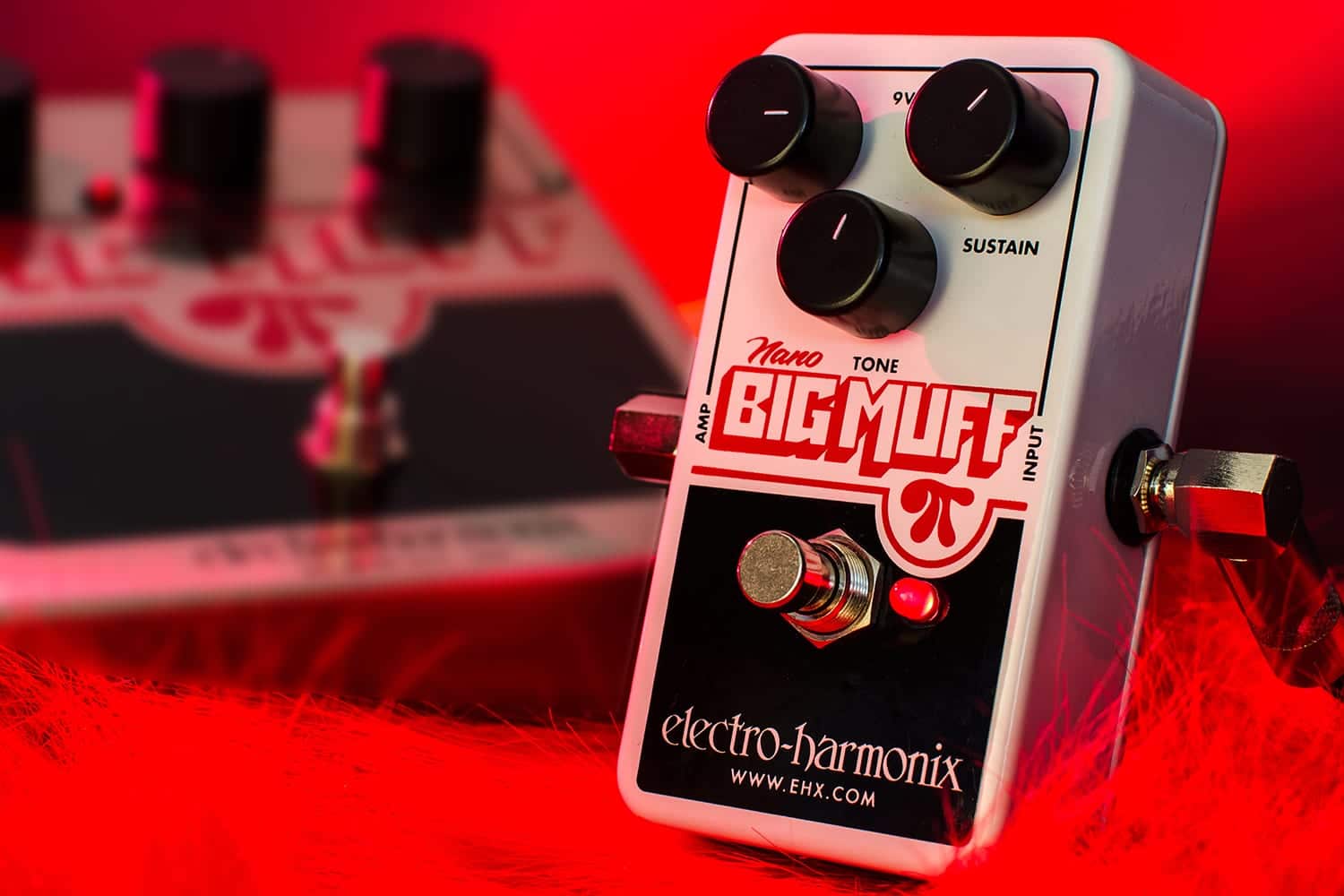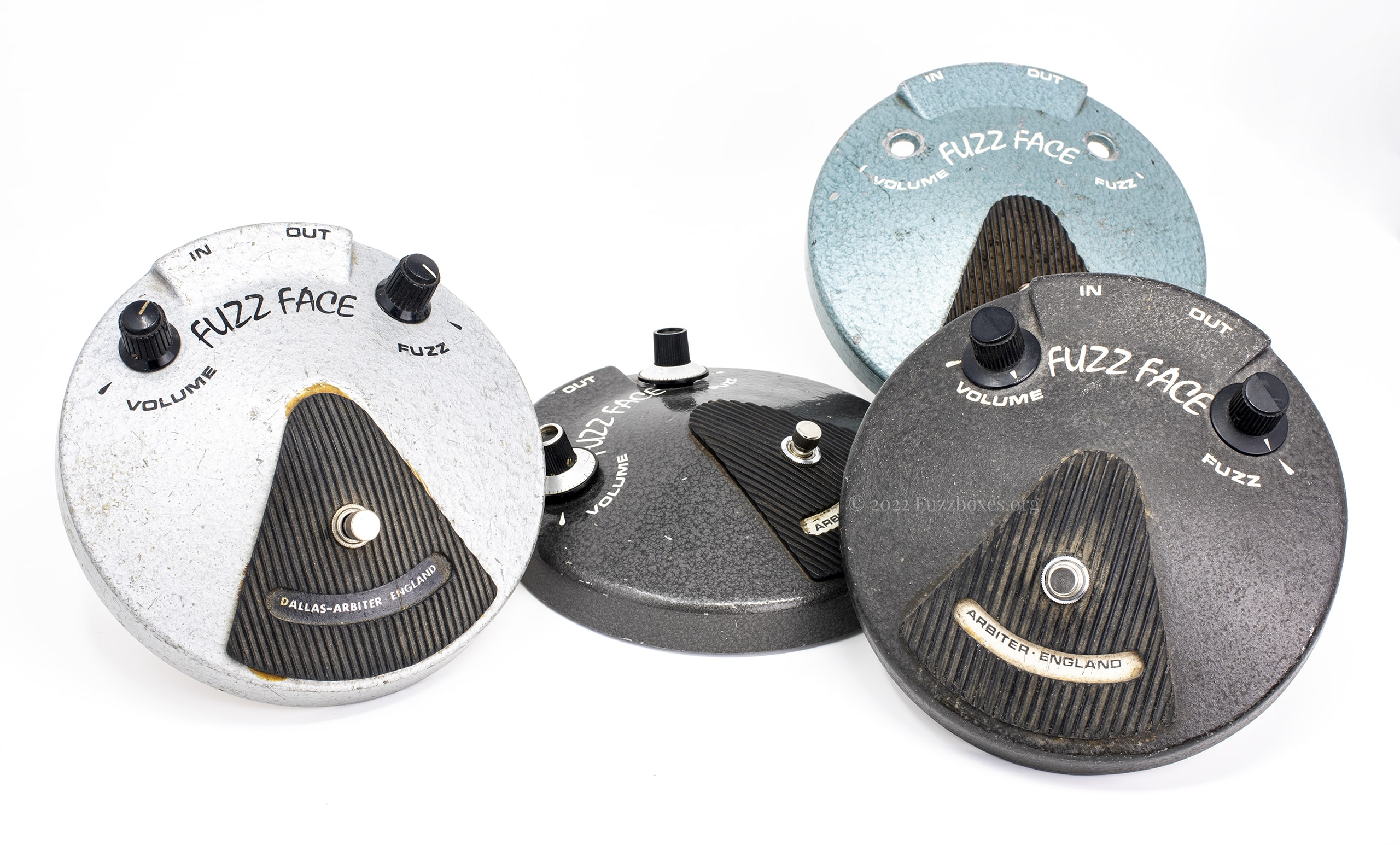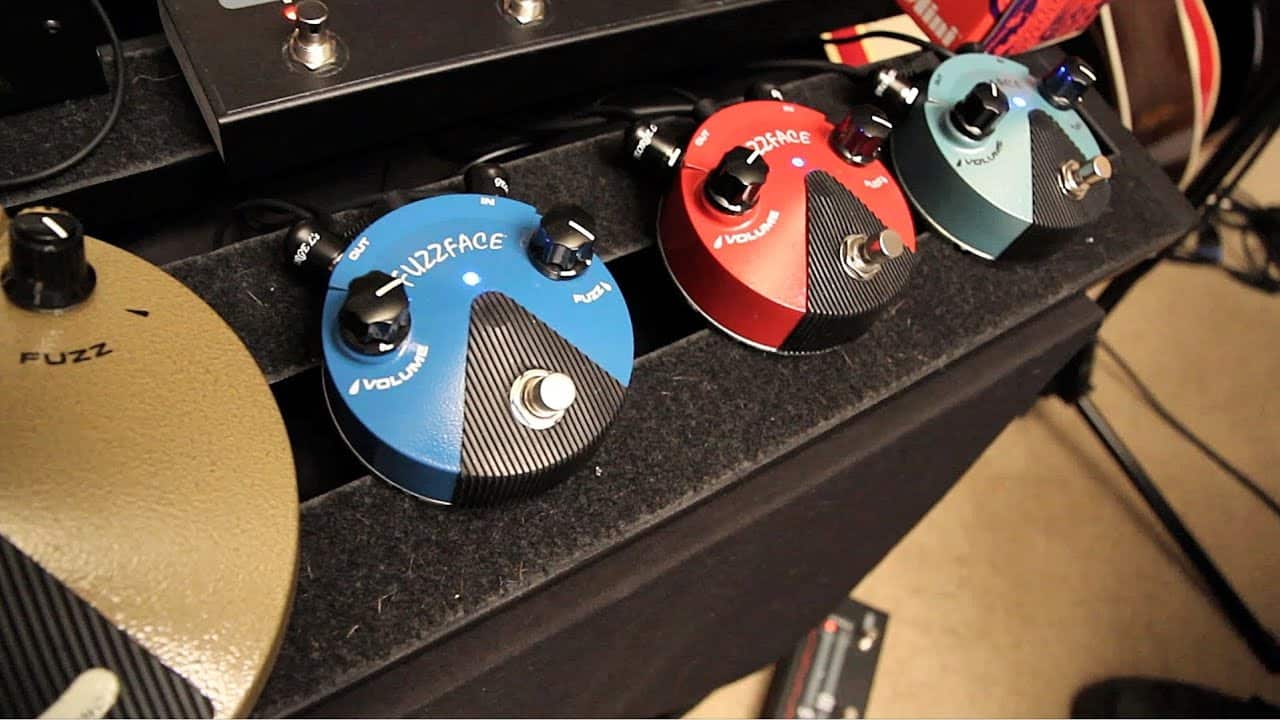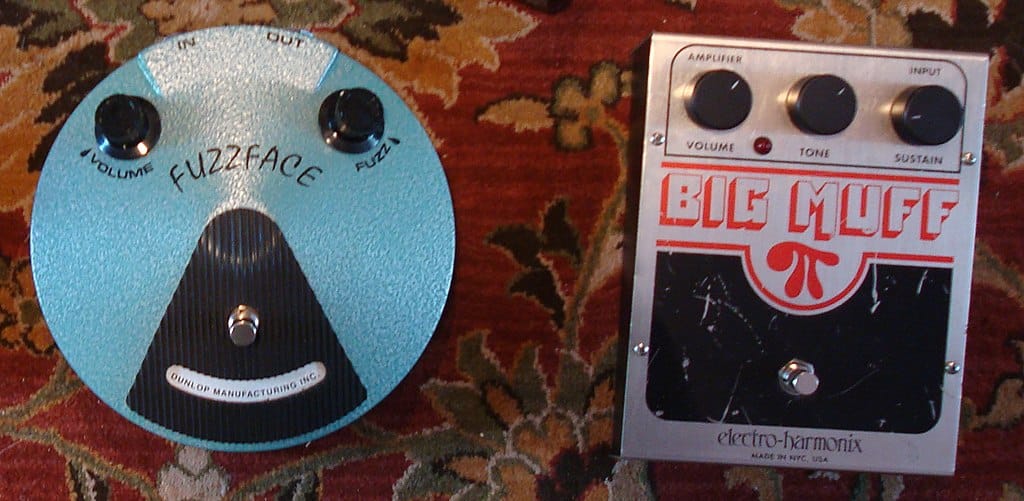Contents
All in all, once it comes to Fuzz Face vs Big Muff, different people usually have different opinions about the winner. Both effect pedals feature unique characteristics which allow them to excel in specific settings. Unable to make up your mind on the pedal to get and could use some help? In that case, you have come to the right place.
A Comparison Of The Pedals

Circuit
Fuzz Face packs a simple 2-stage amplifier circuit that contains 11 components. The components consist of 2 transistors, 2 pots, 4 resistors and three caps. Furthermore, there is a feedback network path divided into 3 parts: Input Stage, Feedback Network and Output Stage.
In the case of Big Muff, its circuit includes 4 common and cascaded emitter amplifier phases. It’s important to point out that the pedal allows passive tone control as well. Also, the schematic of the pedal includes 4 small blocks: Clipping Stage, Output Booster, Input Booster, and Passive Tone Control.
Operation
Fuzz Face’s circuit receives a signal through the DC blocking resistor. Then, one transistor is driven while still staying connected or coupled with another one. So, the operation of Fuzz Face’s circuit can be regarded as a “voltage biasing circuit”.
On the other hand, Big Muff’s circuit contains an input resistor capable of lessening the signal amplitude. Moreover, there is a coupling capacitor whose mission is to eliminate parasitic and excessive DC from your guitar. By changing the values of those two components, it is possible to alter the treble and bass amounts.
Sound
If you opt for the Fuzz Face pedal, you should be able to get a vintage and warm tone thanks to the mismatched Germanium transistors. Moreover, the pedal provides a switching system which is made of true bypass.
About the Big Muff pedal, the sound is kind of distorted (fuzz) which resemble the noise made by broken speakers. Overall, Big Muff’s output is wider than that of Fuzz Face as it covers from deep bass to high treble.
Weight And Size
Fuzz Face is a bit large (10.5 x 7.9 x 3.6 inches) and weighs 2.2 pounds. On the other hand, possessing dimensions of 8.6 x 5.9 x 3.9 inches, Big Muff is lighter than Big Muff by 0.7 pounds.
Number Of Variations
Big Muff grants you a lot of freedom since it features up to 7 different types while Fuzz Face only supports 4 varieties. Thus, in terms of variations, Big Muff is the winner in Fuzz Face Vs Big Muff.
Input Impedance
The input impedance of Fuzz Face is superbly low and it changes according to the potentiometer position. Also, value loads the guitar pickups. Consequently, if you want to get the most out of Fuzz Face, refrain from placing after other pedals.
Big Muff’s input impedance is higher than that of Fuzz Face but it is still considered low. Therefore, the guitar signal easily suffers tone-sucking or frequency loss. Still, you do not have to worry too much as the rest of the circuit system design would make up for the loss.
Output Impedance
The output impedance of Fuzz Face is affected by the feedback network. Even though the real value is set at 15K Ω, it actually changes based on Fuzz control position and the volume control level. Regarding Big Muzz, its output impedance follows the volume potentiometer position but the value should never go past 10K.
Design Enhancements
Between Fuzz Face and Big Muff, Big Muff is the more reliable one. The reason is that all of Big Muff’s parts make use of silicone and each transistor stage is linked with a specific emitter resistance. Therefore, the gain is not affected by the transistor’s intrinsic features or temperature. Also, the Miller capacitors and feedback resistors appear in more than half of those stages, thus assisting in stabilizing the frequency response and behavior.
Fuzz Face Vs Big Muff: Summary

| Fuzz Face | Big Muff | |
| Circuit | A simple 2-stage amplifier circuit containing four resistors, two transistors, two pots, and three caps. Feedback network path with 3 stages: Input Stage, Feedback Network, and the Output Stage | 4 common and cascaded emitter amplifier phases that can be divided into Clipping Stage, Output Booster, Input Booster, and Passive Tone Control. |
| Circuit operation | Voltage biasing circuit | Has an input resistor and a coupling capacitor whose values can be altered to change to the treble and bass |
| Sound | Vintage and warm tone | Wide, distorted and smooth sound |
| Size | 10.5 x 7.9 x 3.6 inches | 8.6 x 5.9 x 3.9 inches |
| Weight | 2.2 pounds | 1.5 pounds |
| Variations | 4 | 7 |
| Input impedance | Very low | Low |
| Output impedance | 15K Ω | Less than 10K Ω |
| Design enhancements | Few to no | Silicone parts with Miller capacitors and feedback resistors in more than half of the stages |
What Are The Variations Of Fuzz Face?
The 4 variations of Fuzz Face pedal are Germanium, Hard Silicon, Soft Silicon and Derivations and Hybrids.
What Are The Variations Of Big Muff?
Big Muff has 7 variations and they are Triangle [1969] Original: 4 x Fairchild 2N5133 Transistors, Ram’s Head [1972/73] Original: 4 x 2N5087 Transistors, Civil War [1993] Original: 4 x KT3102EM 9108 Transistors, Green Russian [1994] Original: 4 x KT3102EM 9108 Transistors, Black Russian [1998] Original: 4 x KT3102EM 9108 Transistors and Pi NYC [2000] Originally: 4 x 2N5088 Transistors.
Final Words

All things considered, it is suggested that you choose Big Muzz over Fuzz Face since it is capable of producing superior sound. Also, the pedal does not take up too much space and it is also light, hence making it easier to carry around. However, if you still prefer Fuzz Face, you should go for the mini versions.

Hi music fan! I am Jeff. Hope that you enjoy some stuff I shared here in my personal blog.
About myself, Currently I am in charging as Artist Manager/Music Supervisor at 72 Music Management. I did managed album to Grammy Award in 2017 with 7 Nominations from 2014-2020 and had the opportunities to work with : A.J. Croce, Blind Boys of Alabama, Bobby Rush, Dom Flemons, Dustbowl Revival, Sarah Grace
Governor of the Memphis Chapter of The Recording Academy is one of a award that I am lucky to achieved.
